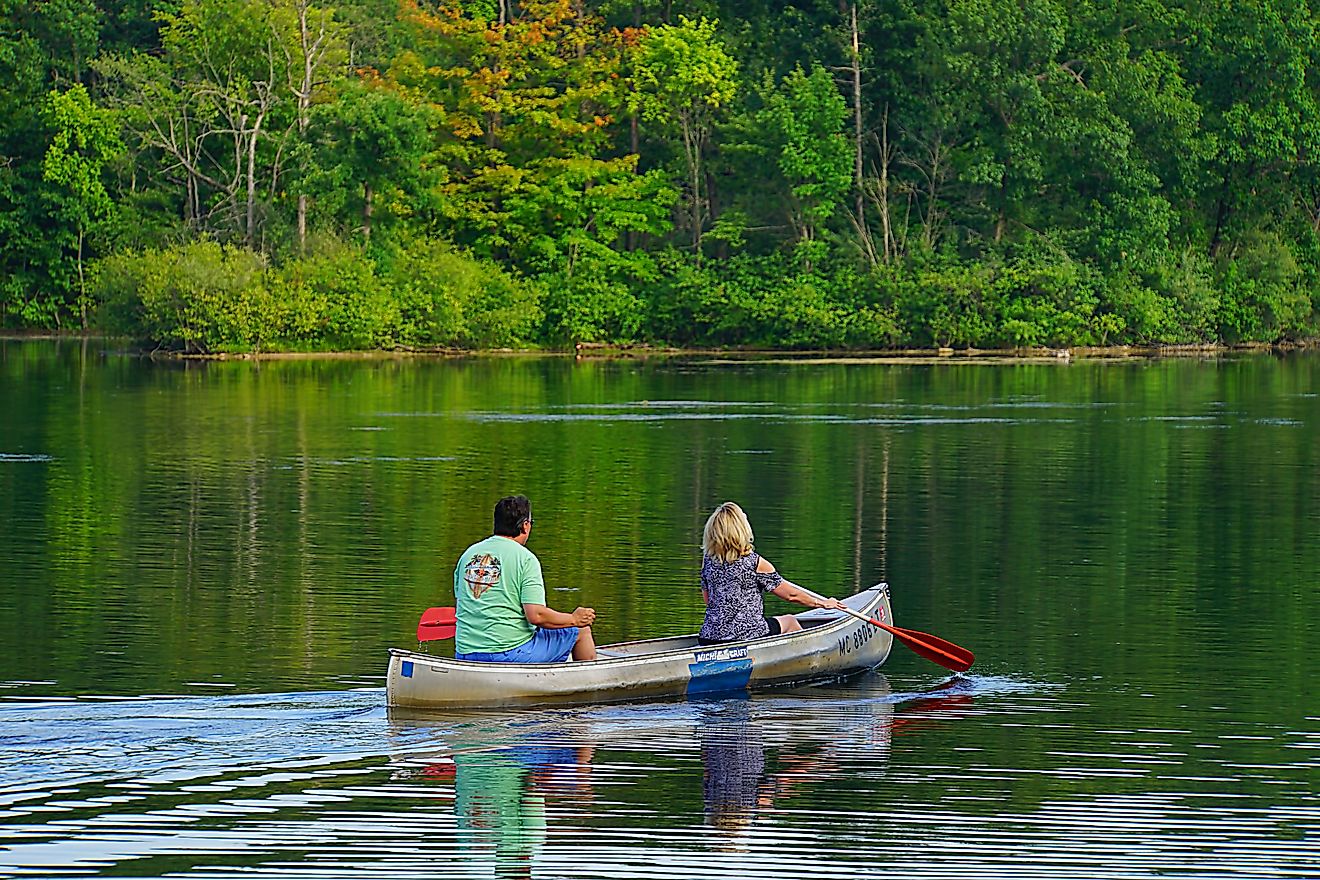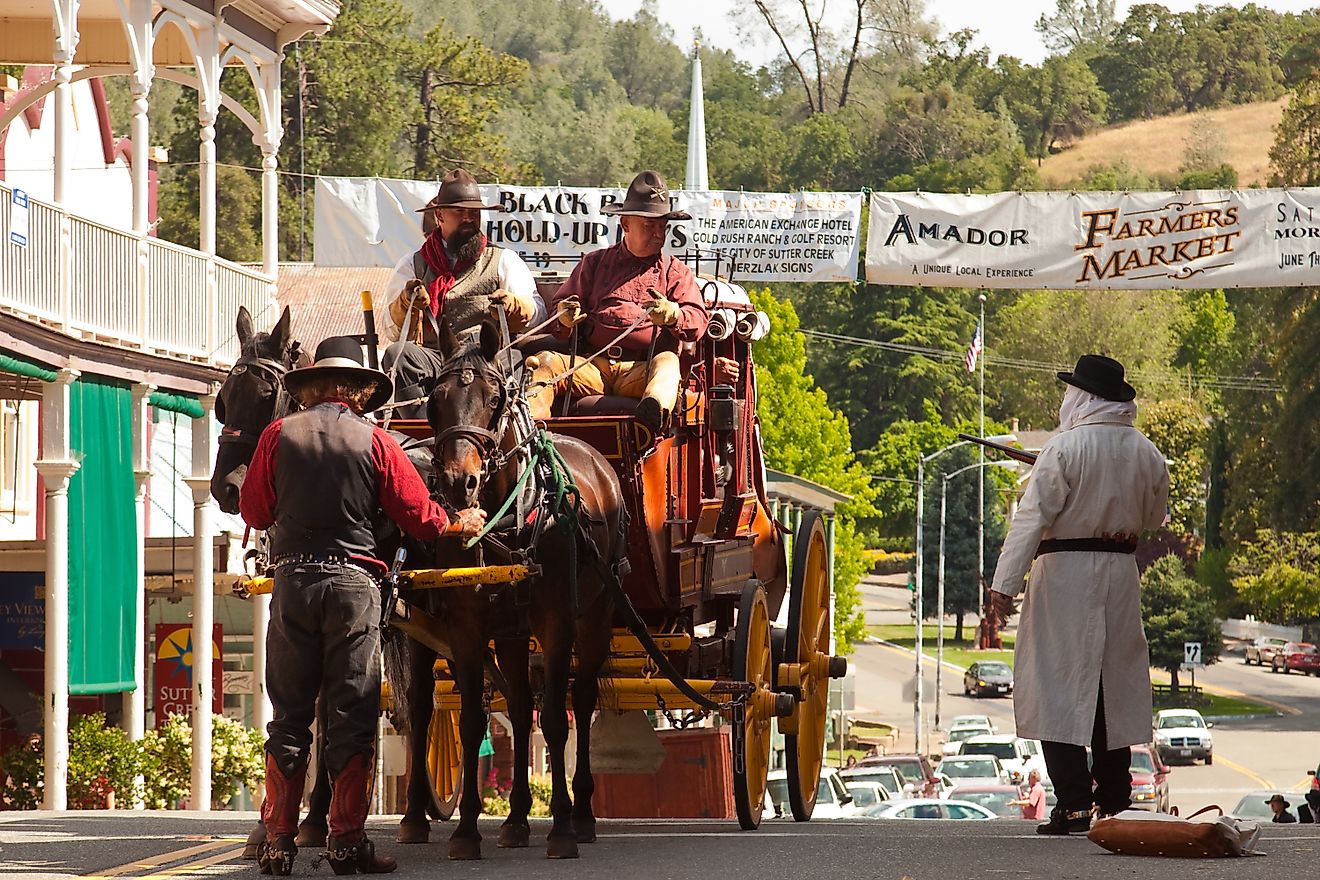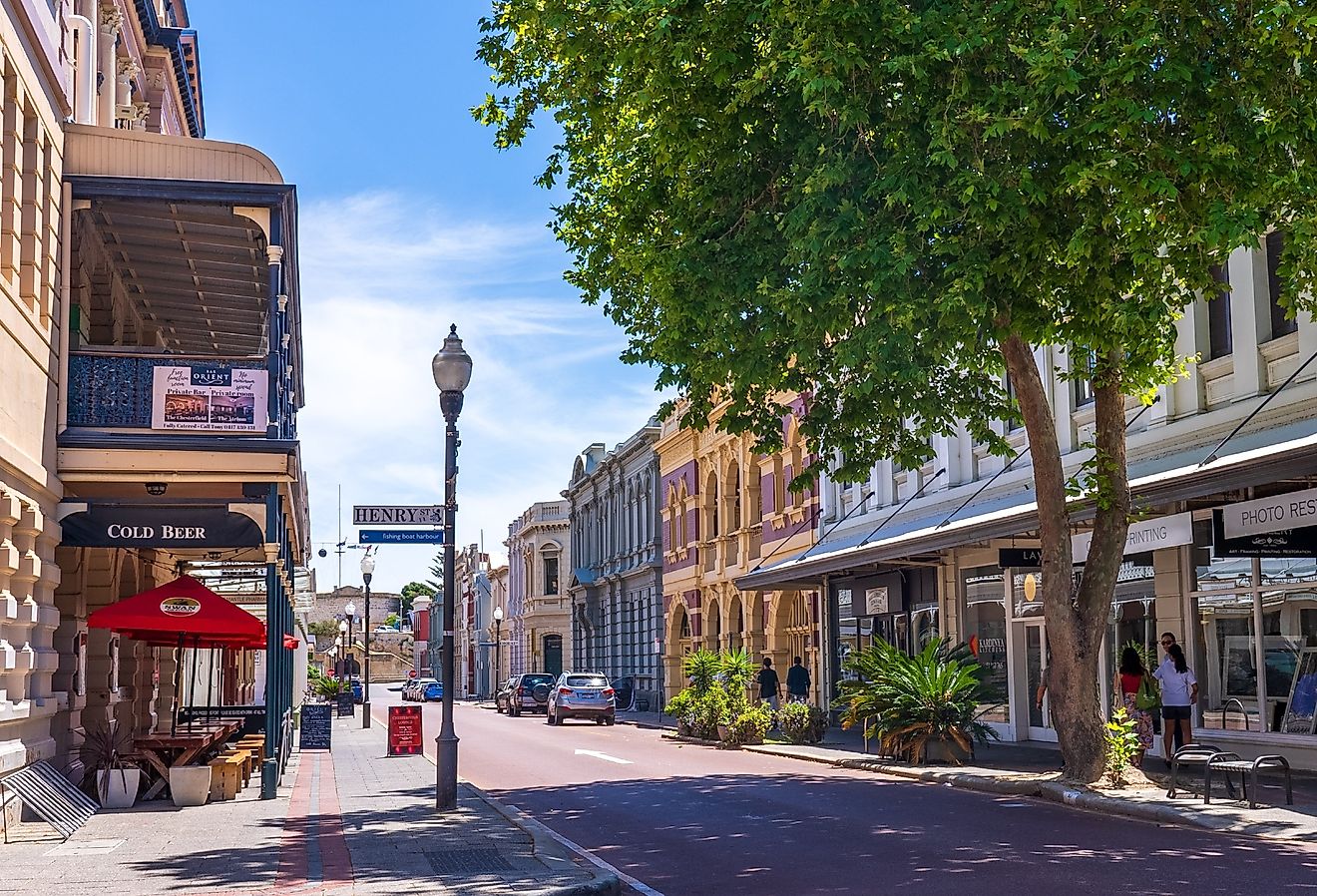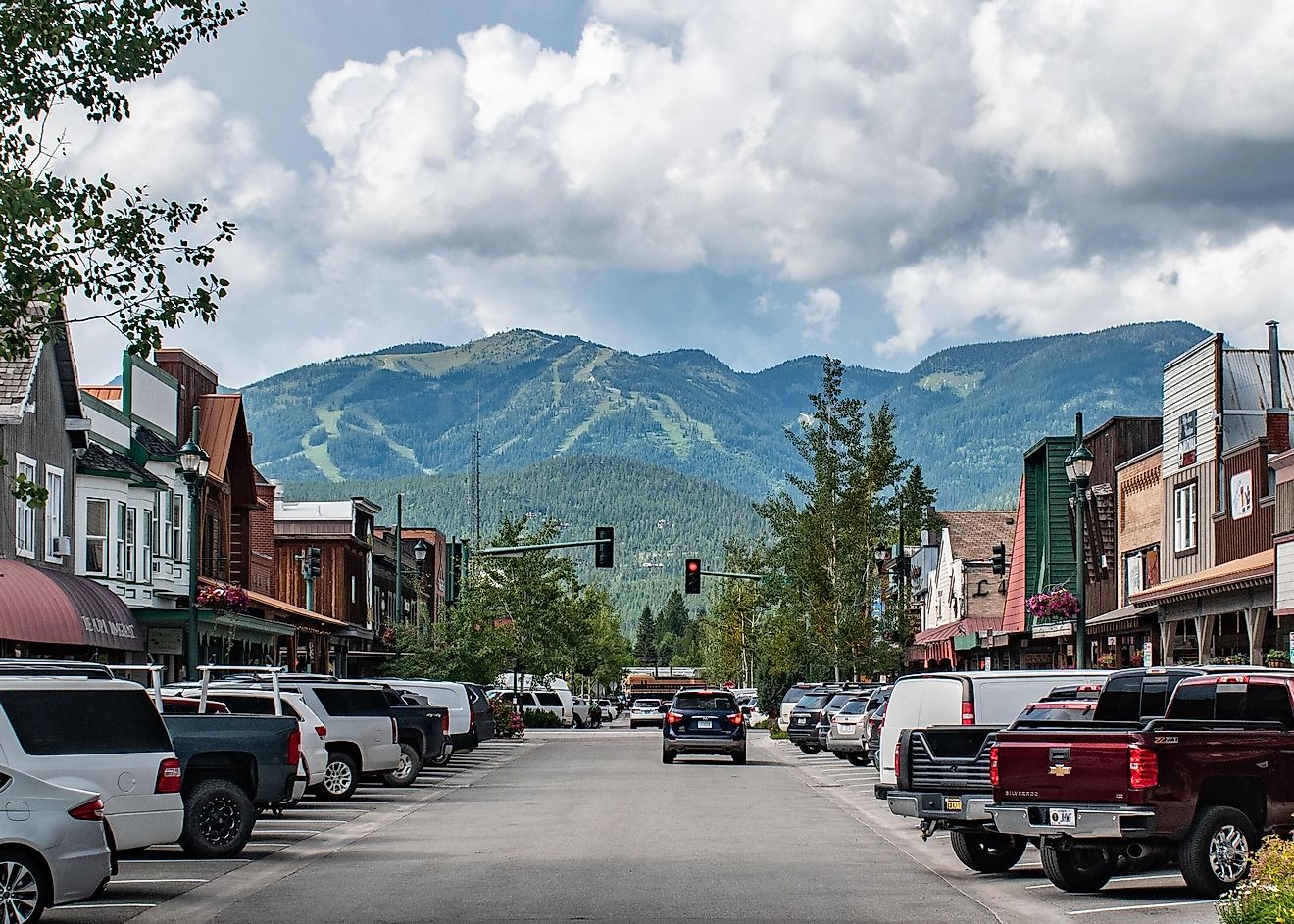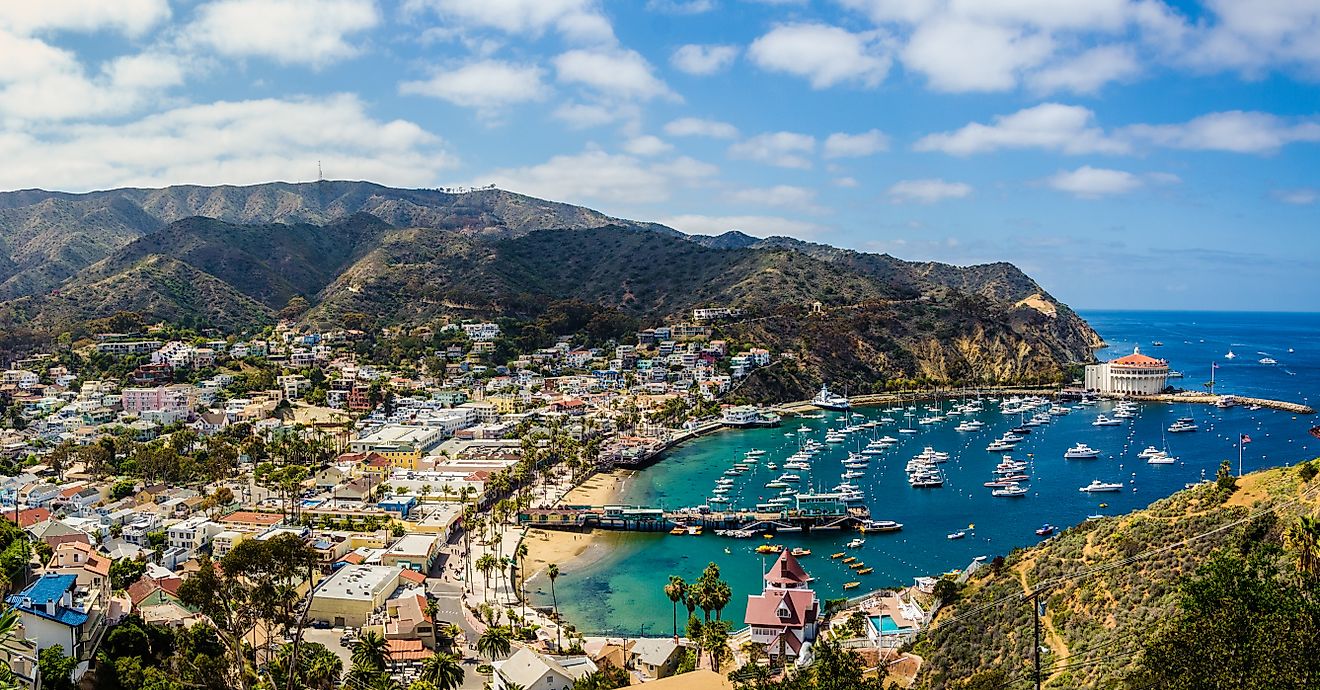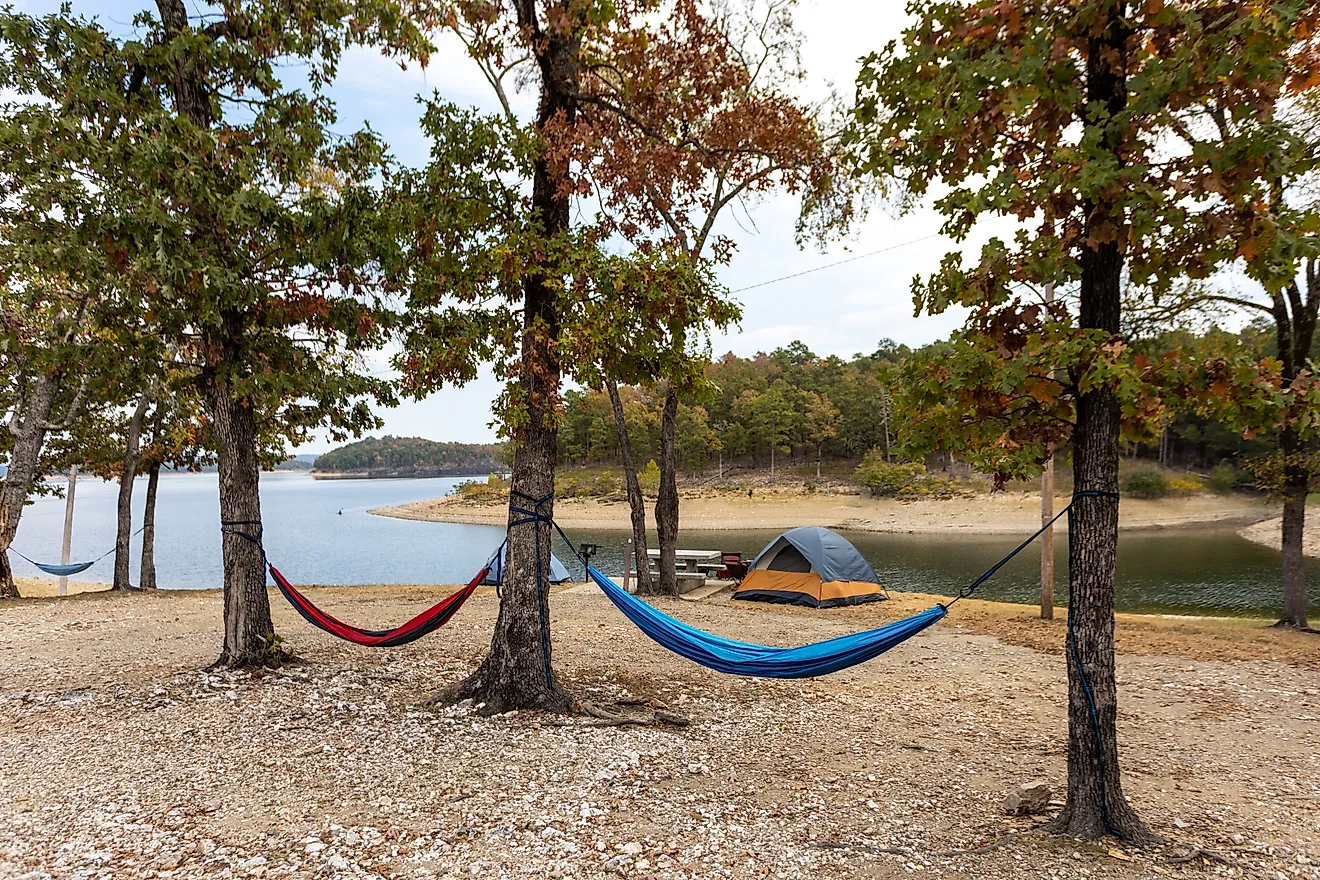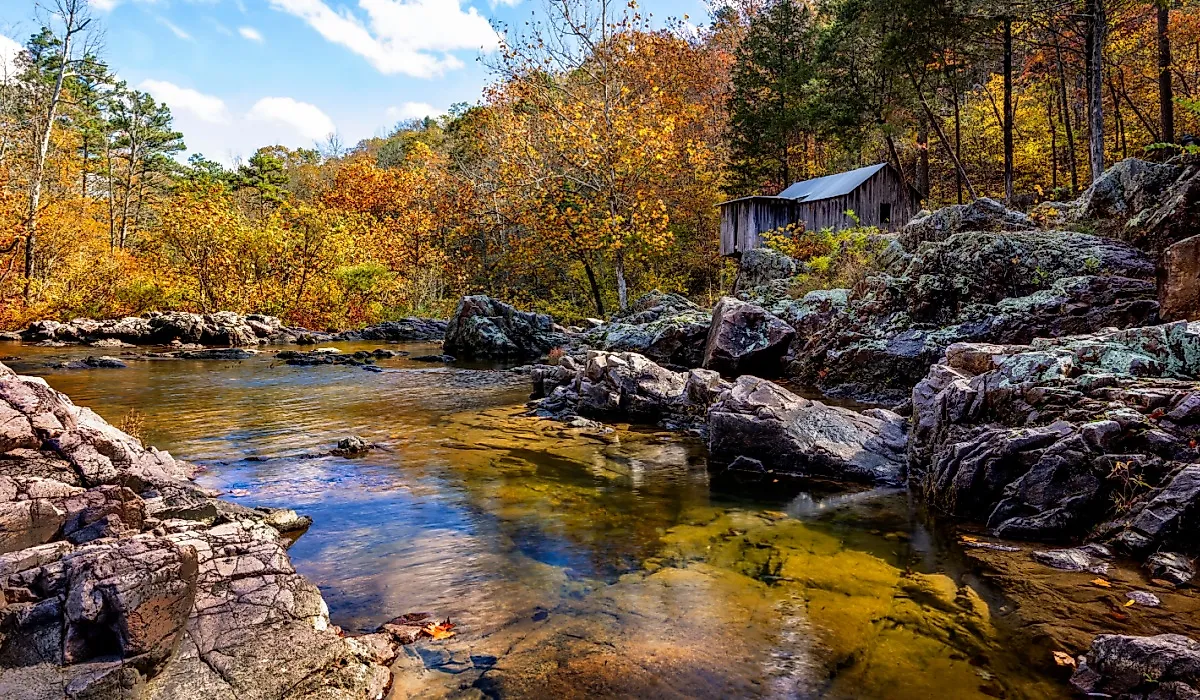
6 National & State Parks In Missouri You Have To Visit
Missouri is an all-too-often overlooked state, unfortunately known to many as a "flyover state." This is a shame, because this region of the country is filled with some of its best and most undisturbed wildlands.
There are several excellent state and national parks protecting these landscapes, from the Ozark Mountains to the city streets of St. Louis, and they are all worth exploring. Today, let's take a look at six of your best options if you're not yet familiar with Missouri's wonderful assortment of public green spaces.
Ha Ha Tonka State Park
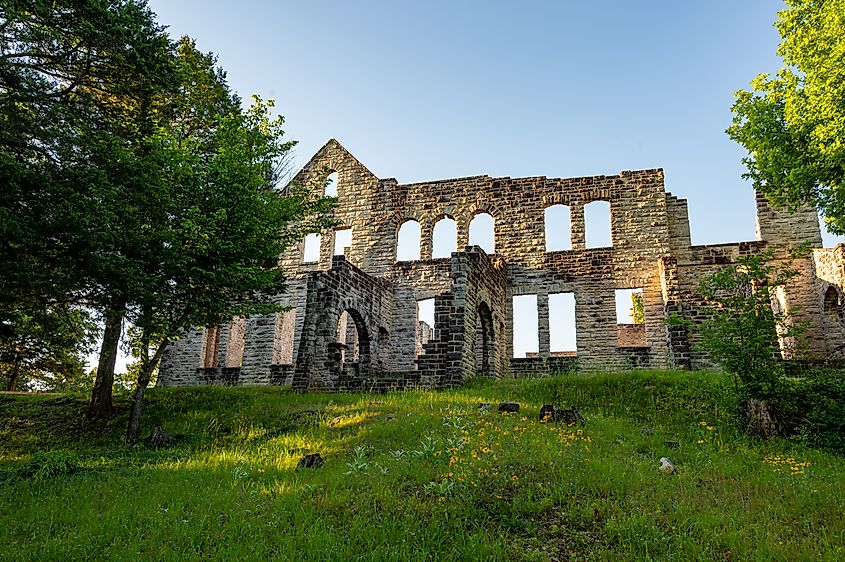
Located near Camdenton on the Niangua arm of the Lake of the Ozarks, Ha Ha Tonka State Park combines unique karst topography with real castle ruins to create one of Missouri’s most fascinating attractions. Free to enter, Ha Ha Tonka is a must-visit for nature lovers and history buffs alike.
Spanning over 3,700 acres, the park features eye-catching natural landmarks like natural bridges, caves, sinkholes, and a large spring that pumps over 58 million gallons of water daily! A well-maintained trail system includes both rugged hikes and accessible boardwalks in the area, allowing you to explore the park’s diverse topography in a variety of accessible ways.
If you're feeling up to it, you are free to walk 15 miles of trails, paddle across the lake, or access the various fishing and picnic areas throughout. Favorite locations include the Devil’s Kitchen Trail and the Colosseum Sinkhole.
At its heart is the stone shell of a 20th-century European-style mansion, originally built by Kansas City businessman Robert Snyder and later destroyed by fire. The ruins overlook the lake and offer a striking, man-made contrast to the surrounding forests and bluffs. Here, interpretive signage explains both the natural and human history of Ha Ha Tonka.
Elephant Rocks State Park
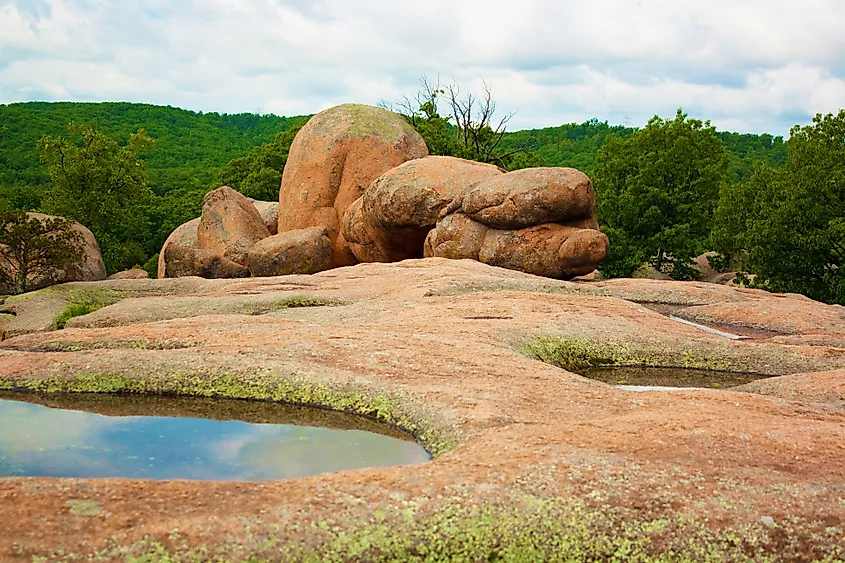
Elephant Rocks State Park, situated in Iron County near the town of Pilot Knob, is centered around a seemingly out-of-place cluster of billion-year-old granite boulders. These giant, rounded rocks have been said to resemble a line of elephants, but are actually remnants of the same ancient geologic activity that shaped the nearby St. Francois Mountains. The park also protects the remnants of an old quarrying operation, with visible cuts in the stone and rusted equipment still present on site, giving it a bit of a ghost town vibe as well.
The most popular pathway here, the Braille Trail, is a one-mile paved loop designed to be fully accessible to anyone. It winds through the boulder field and past informational markers that explain the area's geology, ecology, and mining history. Offshoots from this trail lead to areas for rock scrambling and deeper exploration in the woods, especially popular with adventurous, younger visitors.
Today, Elephant Rocks is primarily protected for educational and recreational use, also boasting picnic areas, open play fields, and a network of other forested paths (gorgeous in the fall season as the leaves change), making it a popular getaway for both locals and visitors alike.
Ozark National Scenic Riverways

Established in the summer of 1964 as the first national park area created to protect a river system, Ozark National Scenic Riverways preserves over 80,000 acres of land surrounding the Current and Jacks Fork Rivers. Located in the sparsely populated southeastern Missouri, the park is known for its clear, spring-fed waterways, as well as the dense forested hills and extensive cave systems on land.
The Current River is navigable year-round and, as mentioned, fed by several large springs, including Big Spring, one of the largest in the country. Canoeing and kayaking are the most common ways to get around, with multiple access points and campgrounds spread across the region for an extended stay. Furthermore, Jacks Fork, more remote and seasonal, appeals to those looking for a quieter float through the wilderness.
On the other hand, hiking trails often lead to historic mills, caves, and blufftop views. For example, the Alley Mill and its adjacent spring are popular stops, offering a glimpse into what life was like in the early days of pioneering in the Ozarks. Hunting, horseback riding, and backcountry camping are also allowed in designated areas, making Ozark National Scenic Riverways a well-rounded place for outdoor enthusiasts.
With no entry fee and multiple nearby towns such as Eminence and Van Buren, this park provides an idyllic introduction to Missouri’s rural hillscapes and abundant, meandering river systems.
Mark Twain National Forest

Mark Twain National Forest is Missouri’s only national forest, covering approximately 1.5 million acres fragmented across 29 counties in the Ozark Highlands. Established in 1939 and formally merged into a single unit in 1976, it now protects key ecosystems, including natural springs, caves, and roughly 10 percent of the state’s forested land.
This vast piece of terrain supports over 750 miles of trails suited to hiking, mountain biking, horseback riding, and motorized vehicles. Much of the famed Ozark Trail runs through this forest, too, and the picturesque Glade Top National Forest Byway offers numerous overlooks with views stretching dozens of miles away toward the Boston Mountains.
Water is also a highlight here. More than 350 miles of perennial streams weave through the land, including the Eleven Point National Scenic River. Furthermore, Greer Spring, the largest spring on national forest land, pours over 200 million gallons daily into the river system.
For the more experienced outdoorsmen out there, the Irish Wilderness, Bell Mountain, Paddy Creek, and five other local areas, totaling around 78,000 acres, encompass some of the most remote and pristine backcountry in the Midwest. You can spend the night and camp in more than 35 developed sites as well, float rivers, spot wildlife, explore riverside trails, or drive winding scenic byways in this top-notch federally protected space.
Gateway Arch National Park
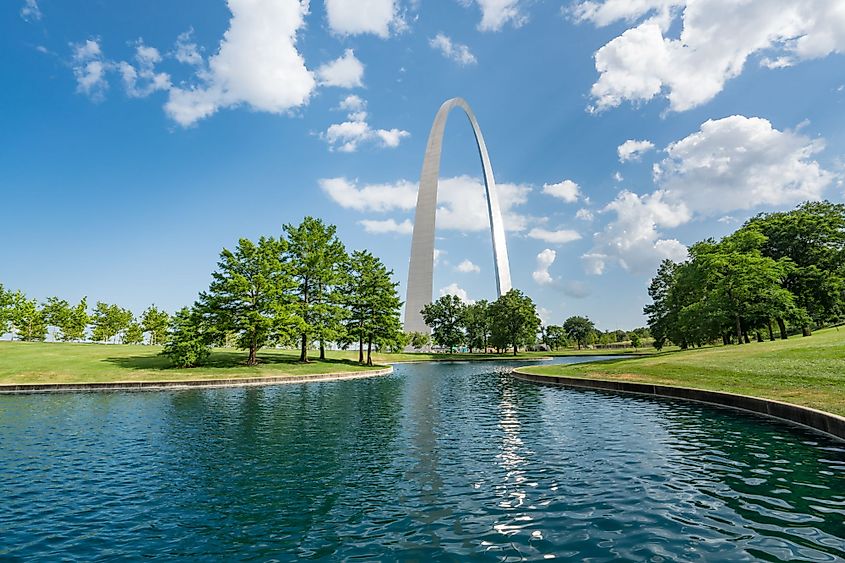
For a touch of urban exploration, the Gateway Arch National Park in downtown St. Louis centers around none other than the 630-foot-tall Gateway Arch, a stainless-steel behemoth built to commemorate America's westward expansion. Completed in 1965 and designed by architect Eero Saarinen, the Arch remains the tallest man-made monument in the United States and a defining feature of the St. Louis skyline since. More interestingly, a tram system inside the Arch allows you to ride to the top for far-reaching views stretching across Missouri and Illinois.
Despite also being the smallest national park in the U.S. by area, this one can't be missed if you happen to be in and around this bustling metro. The park itself covers 91 acres along the Mississippi River, including both the Arch and the historic Old Courthouse.
You can begin your visit at the underground Gateway Arch Museum, which explores the Lewis and Clark expedition, early frontier life, and the many challenges surrounding the country's westward growth over the centuries. Moreover, the Old Courthouse stands as a truly preserved site, one that saw significant 19th-century trials, including the Dred Scott case. The grounds also feature landscaped walking paths, reflecting pools, and riverfront green space designed for events and general recreation in the city.
Castlewood State Park
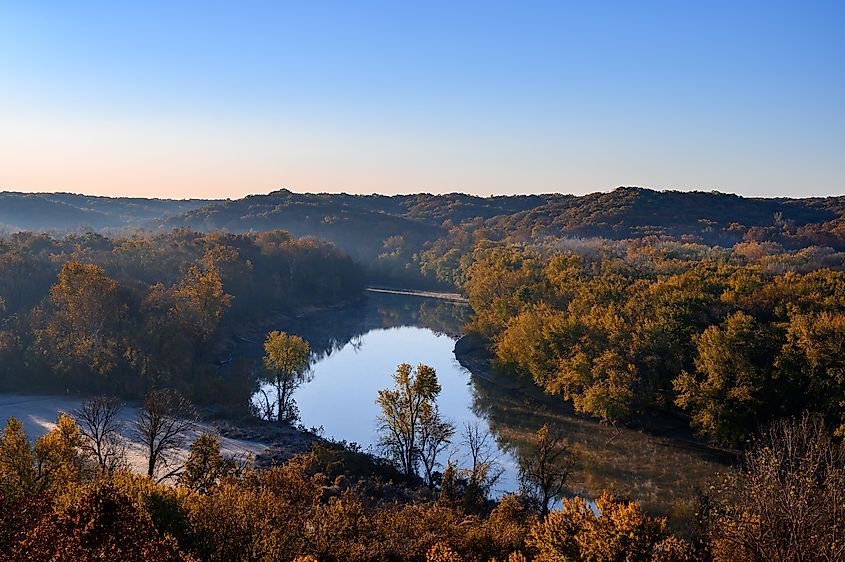
Sunrise at Castlewood State Park in Missouri.
For a quick and easy escape from St. Louis, Castlewood State Park is located a short drive west of town along the Meramec River. It covers over 1,800 acres and serves as a popular outdoor option just a 30-minute drive from the dowtown core.
This convenient, yet beautiful state park preserves a portion of what was once a rowdy riverfront resort district during the early 1900s, with remnants like old stone steps and foundations still visible along the riverbanks.
Now, Castlewood is best known for its elevated views that anyone can appreciate. The network of trails here totals more than 26 miles, and, like many other entries on this list, they support a mix of hiking, mountain biking, and equestrian use. For one, the River Scene Trail climbs steep limestone cliffs that rise nearly 250 feet above the river, providing panoramic overlooks of the floodplain and forests below.
The terrain in Castlewood ranges from shaded valleys along Kiefer Creek to rocky ridge trails through oak-hickory forest. While you might be tempted to swim on a hot summer day, swimming in the river is prohibited due to strong currents. The park does, however, contain an assortment of excellent fishing holes along the Meramec River and Kiefer Creek. Moreover, birding, trail running, and nature photography are other common activities to be enjoyed at this scenic getaway from the big city.
See the Natural Wonders of Missouri Today
With dozens of other wonderful state and national parks that didn't quite make the list and little crowding (as most tourists tend to flock to the more coastal states), Missouri is clearly an amazing option for outdoor enthusiasts looking for something new to explore. So, why not pick this central state for your next great American adventure?

